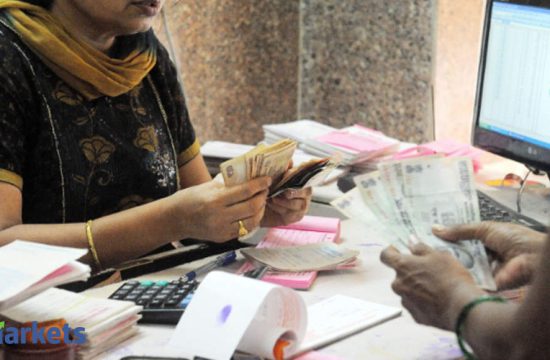
WASHINGTON: Federal Reserve Chair Jerome Powell, in a sober review of where the U.S. economy stands on the cusp of its reopening, warned on Wednesday of an “extended period” of weak growth and stagnant incomes, pledged to use more of the central bank’s power as needed, and issued a call for additional fiscal spending.
“It will take some time to get back to where we were,” Powell said in a webcast. “There is a sense, growing sense I think, that the recovery may come more slowly than we would like. But it will come, and that may mean that it’s necessary for us to do more.”
Powell made clear, however, that the Fed won’t push interest rates below zero, as traders had been increasingly betting. Negative interest rates, he said, are “not something that we are considering.”
For a central banker who spent part of his career as a deficit hawk and has tried to avoid giving advice to elected officials, the remarks marked an extraordinary nod to the risks the U.S. economy is facing from the combined health and economic crisis brought on by the coronavirus pandemic.
The U.S. central bank has slashed interest rates to near zero and set up a broad network of programs to ensure financial markets continue to function during the pandemic. It has also established precedent-setting lending facilities for companies and the first-ever corporate bond purchases.
Congress, for its part, has allocated nearly $ 3 trillion for economic relief during the crisis.
The U.S. response to date “has been particularly swift and forceful,” Powell said in remarks webcast by the Peterson Institute for International Economics. “But the recovery may take some time to gather momentum,” and be dictated by progress fighting the pandemic, he added.
The longer those health risks persist, the Fed chief said, the more likely businesses will fail and households will be strapped for income in a downturn that he noted has fallen most heavily on those least able to cope. A recent Fed survey, he said, estimated that 40% of households with less than $ 40,000 in income included someone who has lost a job since February.
The worst case outcome leaves the economy mired in “an extended period of low productivity growth and stagnant incomes … Additional fiscal support could be costly but worth it if it helps avoid long-term economic damage and leaves us with a stronger recovery,” Powell said in what amounted to a direct call for Congress to ramp up its aid during the crisis.
“This trade-off is one for our elected representatives, who wield powers of taxation and spending.”
Major U.S. stock indexes were mixed in early morning trading after Powell’s remarks, with the benchmark S&P 500 index down about 0.4%. Yields on Treasury securities slipped, and some contracts in interest rate futures markets continued to price in a small chance the Fed might resort to a negative-rates policy within the year, even after Powell disavowed the idea.
The U.S. House of Representatives and Senate are deliberating further responses to the pandemic, which has killed about 81,000 people in the United States. White House officials have said they want to assess how an initial round of economic reopenings by states goes before deciding what to do.
But in his remarks, Powell mapped out a series of uncertainties that will dictate what happens – including how quickly the novel coronavirus is controlled and how fast overall confidence returns.
DIFFERENT JUNCTURE
Powell’s appearances since the start of the pandemic forced the Fed into a series of emergency actions that have been aimed largely at reassuring people that the U.S. central bank would use its power to keep their finances afloat, and to explain the programs it had designed to do so. He repeated that pledge of further action on Wednesday.
But his comments this time come at a different juncture, with an increasing number of U.S. governors now lifting the various restrictions on commerce and activity put in place to slow the spread of the virus, and attention turning to whether that reopening will lead to a quick return of economic activity or a second wave of infections.
“The next six to eight weeks will be fundamental” in determining whether consumers and workers feel safe enough to return to the marketplace, and if they are able to do so free of disease, Richmond Fed President Thomas Barkin said in a webcast on Tuesday.
“We are at the brink of … some re-emergence of the economy. It is a question of how do we get the pace up” of the recovery while keeping the health risks under control, Barkin said.
That has become a centerpiece debate in the United States, pitting the potentially catastrophic health outcomes should the virus resurge against the dire economic consequences of tens of millions out of work and business and family budgets stressed to the breaking point.
The U.S. economy lost a staggering 20.5 million jobs in April alone and some 33 million Americans have claimed jobless benefits since late March, when many state leaders started telling people to stay home to fight the virus. Some analysts think the economy could shrink by as much as 40% on an annualized basis in the second quarter.
In a Senate hearing on Tuesday, Anthony Fauci, director of the National Institute of Allergy and Infectious Diseases, spoke of the risk the country could “paradoxically” end up worse off if it reopens too haphazardly and ends up with not just new rounds of infections, but a second wave of restrictions on who can go to work and what businesses can stay open.









